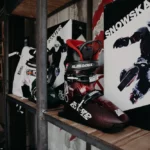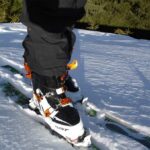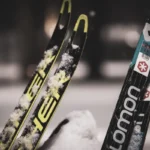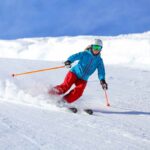Skiing is one of the world’s most dangerous, physically demanding, and exhilarating sports, and this is the case even on the easier slopes and terrain.
The altitude and conditions that skiers need to negotiate are incredibly difficult even on a clear day, and the only way to do this is with a very specific technique that takes a lot of time, effort, and experience to build.
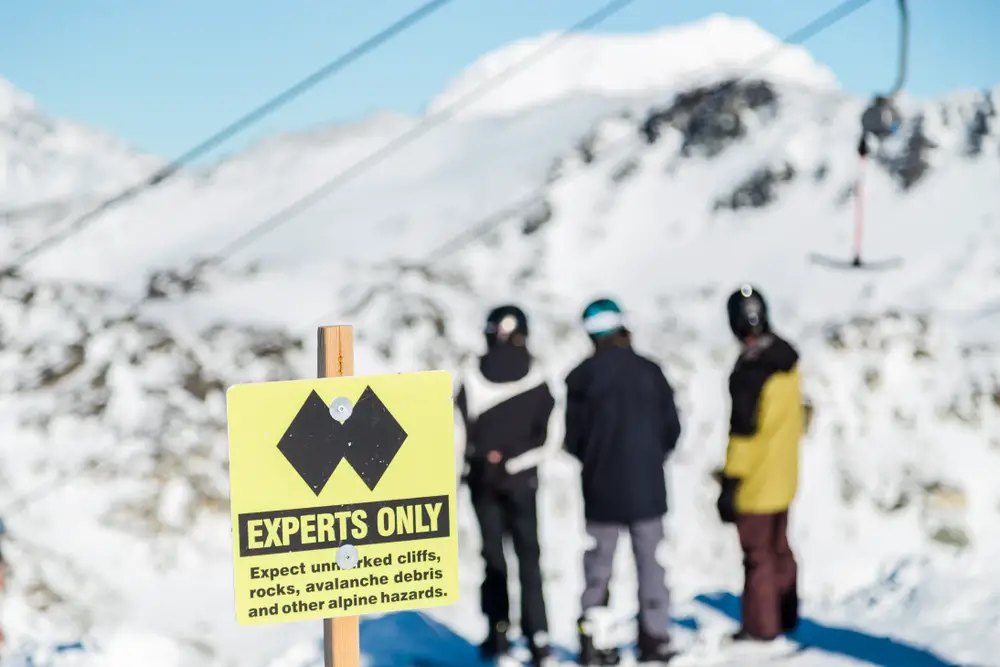
This is the reason why most amateur skiers won’t venture out of their comfort zones and won’t be able to ski on the more difficult slopes without significant risks and danger to themselves.
While the rating system for ski slope difficulty is different in the various places globally where skiing is popular, in the US the most difficult slopes are the black diamonds, which mark out routes of significant technical difficulty which pose extreme danger to anyone not confident enough to navigate them.
These daunting slopes are among the ultimate thrill and achievement for skiing enthusiasts, and many aspire to explore and experience the thrill these routes can offer, however they are not for the faint of heart or the inexperienced which is why they are marked out so clearly, to deter and prevent lesser skiers from putting themselves in danger.
Fatalities in skiing are mercifully uncommon, but undertaking a route you aren’t prepared for, or which is above your skill level, is just one of the ways skiing can potentially ruin your holiday or even your life.
If you are experienced enough or are aspiring to eventually tackle these types of runs, there are several things you can do to make the experience easier, from using the right equipment to the right techniques, some of which are more difficult to acquire than others.
In this guide, we’re going to give you a rundown of how to ski a black diamond and achieve expert status as a skier.
We’re going to look at everything from equipment to skiing techniques which are essential to know and use before being able to target these runs, to ensure you can get down them safely and extract the maximum amount of enjoyment and adrenaline from the experience without endangering yourself or others.
But first, let’s take a look at what dangers a black diamond run poses and what you’ll have to face when undertaking these types of routes.
What Makes A Black Diamond Run?
A black diamond runs are among the most advanced and difficult piste routes at any ski resort and will have a host of features that many skiers will find incredibly challenging.
These routes will generally have a steepness of 40% or above, and may or may not be groomed meaning not only are these routes very steep, but the conditions can also be as challenging as off-piste routes which are even more dangerous and challenging.
Even if the route is groomed, there are other challenges to face. Generally, these routes will be narrow, not allowing skiers the space to slow down or turn easily, steep, and will have features such as large moguls and other difficult terrain which is incredibly hard to navigate safely.
There can also be trees, exposure to wind, and other factors which mean most skiers should not attempt these routes without significant confidence in their experience and technique.
The only routes more difficult than black diamonds are double black diamonds, which can be even steeper and have additional hazards such as drop-offs.
Black diamonds, as they are known in North America, Australia, and New Zealand fall somewhere between Reds and Blacks in the European rating system for those who are unfamiliar with the North American system.
Important Equipment
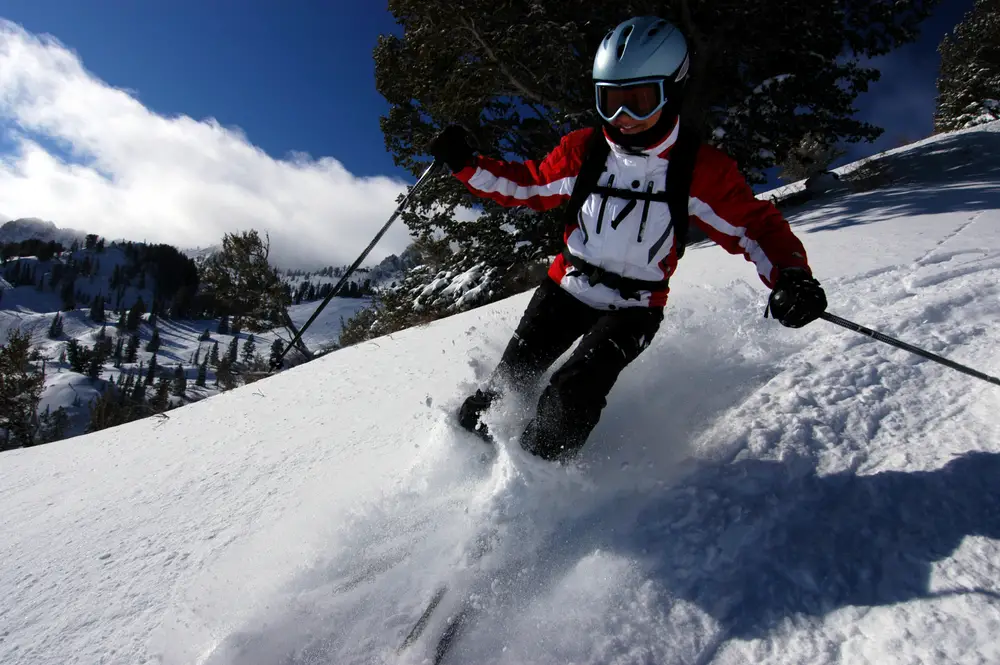
As you can see, black diamond routes pose significant challenges and even experienced and fairly confident skiers can find them incredibly difficult or even unpleasant to negotiate, especially if they don’t bring the correct equipment.
While a specific style of ski isn’t essential for black diamonds, apart from that they are alpine skis, it's important to ensure everything is well maintained and prepared and a part of this is ensuring the skis are sharpened and that the clips are set up correctly.
Skis
Sharp edges on your skis will ensure that you are able to cut down tough terrain cleanly and give you the grip you need to ski down steep and challenging terrain such as black diamond routes.
Additionally, properly set up clips are key. Too loose and you risk coming unclipped during more technical skiing in moguls which can result in disastrous and dangerous falls as your ski could unclip from your boot.
However, if the clips are too tight, you will find clipping in and out more challenging and if you do fall over your skis won’t unfasten which can pose significant risks of injury to your ankles and legs.
Generally, less confident skiers will use looser bindings to make it easier for them to clip in and out and to help them avoid injury when they inevitably fall over, however, more experienced skiers will use tighter bindings to ensure that the skis stay attached even during difficult terrain.
Helmet
Another important, or rather, essential piece of kit when tackling routes like this is a helmet. Head injuries are very common in skiing, and people often underestimate how solid pistes are when you fall onto them.
It isn’t like falling on snow off-piste or under normal circumstances where the soft snow cushions the impact of your body.
Ski routes are incredibly tightly packed and can be as solid as an ice rink or concrete, with the added danger of being sloped and at the top of a massive mountain!
A good ski helmet can help prevent a lot of the risk of head injury when skiing and will help reduce the chance of serious injury should you fall and hit your head on the ground which is more likely to happen on more difficult routes like black diamonds.
Ski helmets also often incorporate additional features to make them perfect for skiing, such as being designed to work with skiing goggles and providing warmth as well as protection.
While other equipment is still important, such as a good ski jacket, comfortable ski boots, and other warm-weather gear, these are obvious and aren’t as important as skis and a good helmet.
Let’s look at some of the other necessities.
Fitness
Fitness is key to tackling demanding runs like this, and without it, your risk of injury increases exponentially.
Skiing may look or sound relatively simple, after all, you’re just sliding down an icy mountain right?
This couldn’t be further from the truth.
Skiing is one of the most physically demanding sports in the world, and it also takes place at altitude, which is why skiers need to consume almost double the number of calories a normal person would.
Good cardiovascular fitness and strength are key to being able to tackle runs like this, and if you aren’t fit enough you risk serious injury or at least the severe embarrassment of becoming stranded and needing to be rescued.
Know your limits and only undertake these routes if you are fit and robust enough to handle continuous moguls, constant parallel turning, and high speeds.
Key Techniques
Now we come to the really complex stuff.
Skiing is full of techniques for various skill levels, but for black diamond routes, there are advanced techniques that are essential.
Parallel turns - Parallel turns are one of the more advanced techniques and a lot of skiers will never really get the hang of this style of skiing. Lessons are the best way to learn this style of skiing, as there are far too many individual techniques to break down in a simple breakdown.
In short, however, these turns are what allow skiers to regulate their speed on steeper narrower slopes where the terrain is more difficult, and where the pizza/french fry style of skiing and turning is totally inadequate.
Knowing how to execute parallel turns confidently is essential for black diamond slopes and without being able to use them effectively you will be unable to negotiate your way down even an easier black diamond and should stick to the easier blue and green slopes to work on your technique and try to perfect this more advanced style of skiing.
Edging - Edging is the technique of skiing on the edges of your skis, using them to carve down the mountain, and using the shape of the skis themselves to help turn and control your direction and speed on more difficult terrain.
Carving like this is even more advanced and difficult than parallel turning, but it’s very important and again can only really be learned properly with proper skiing lessons and plenty of practice.
The technique requires perfect coordination between the skis, the legs, and the upper body, however, it’s very useful, particularly on steep and icy slopes.
Final Thoughts
Tackling a black diamond is a significant challenge and will require immense focus, practice, and learning before you are really ready to tackle them.
While this guide gives you an idea of the bare essentials which are needed to tackle these slopes, the only way to know you’re ready is to consult with a professional ski instructor who will be able to assess your style and progress and advise you on what you’re really capable of tackling, as well as helping you get to that next level you aspire to.
- Types of Skiing Terrains: A Comprehensive Guide for Every Skier - December 6, 2024
- Skiing Nutrition: Essential Nutritional Advice and Meal Planning for Skiers - August 15, 2024
- Backcountry Skiing Explained: Essential Tips and Gear - August 8, 2024



